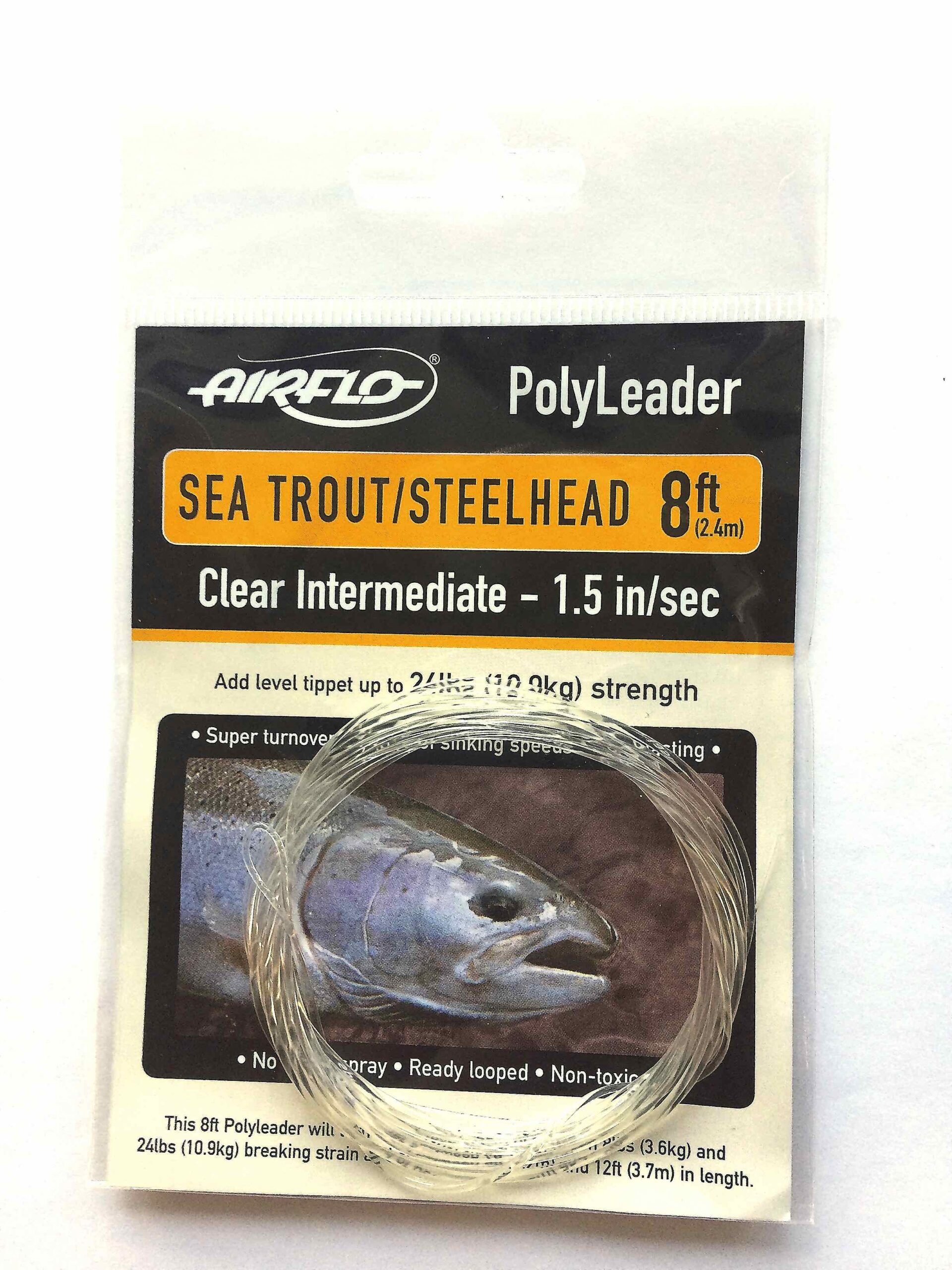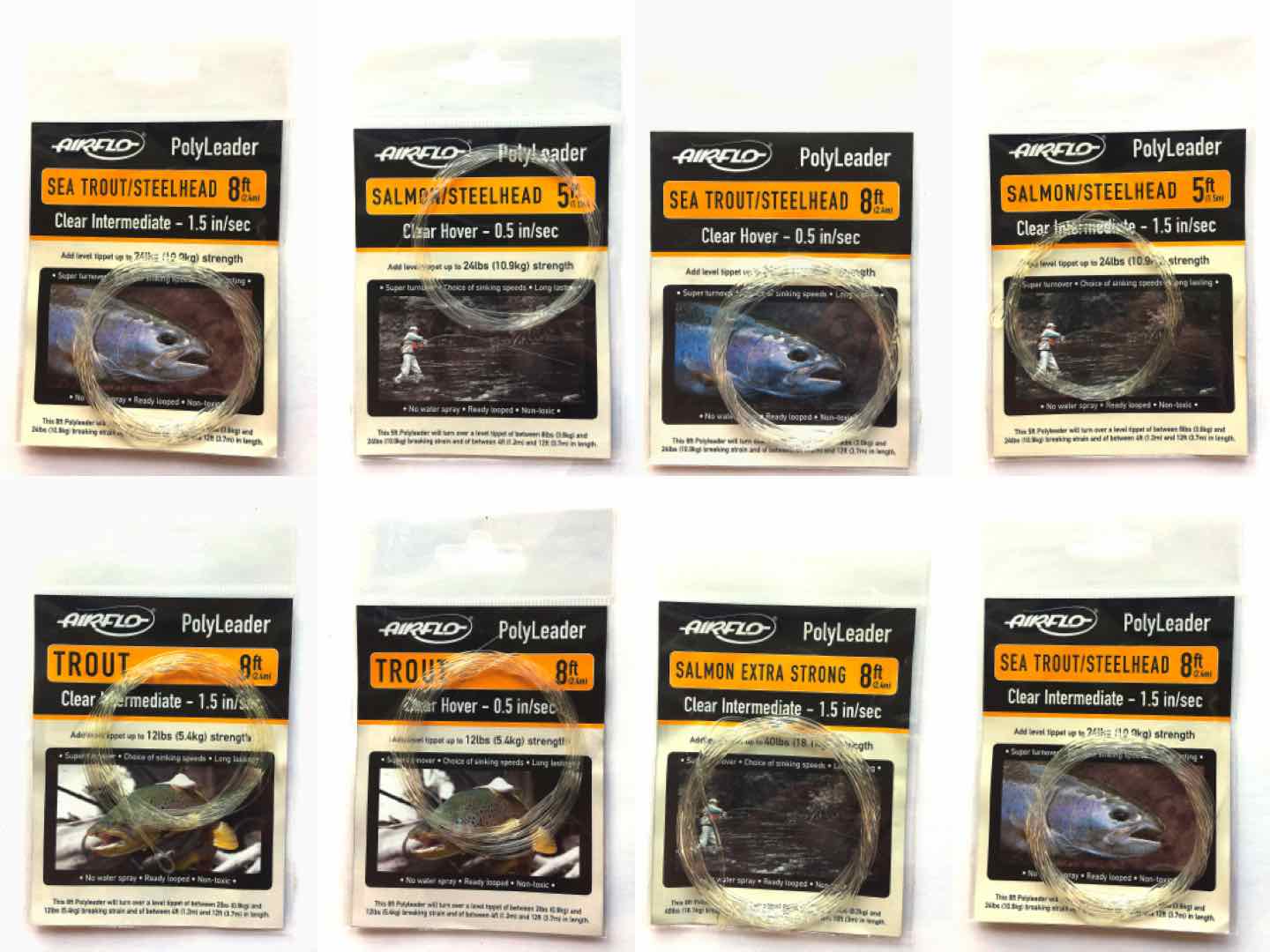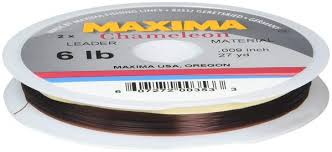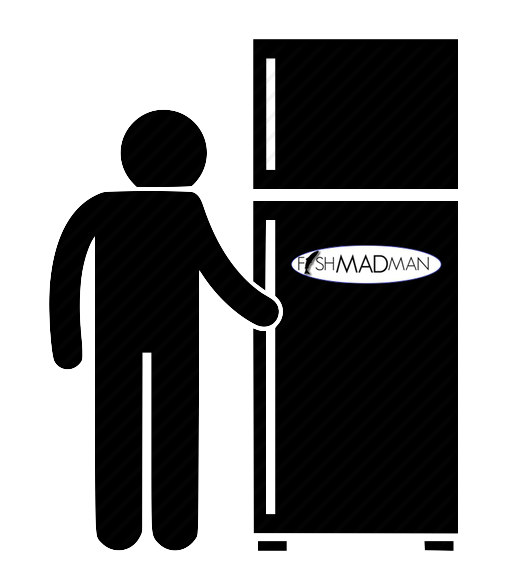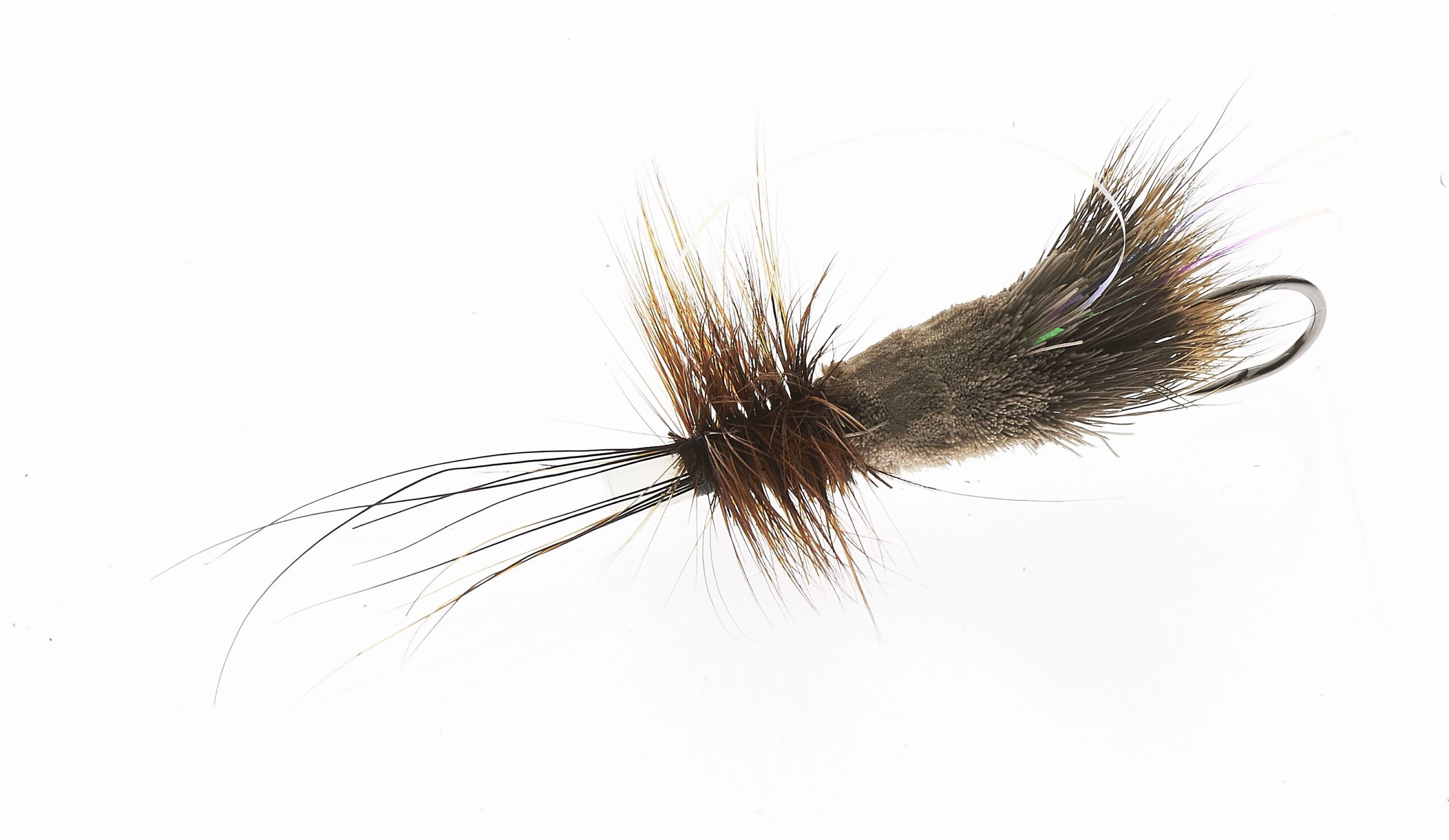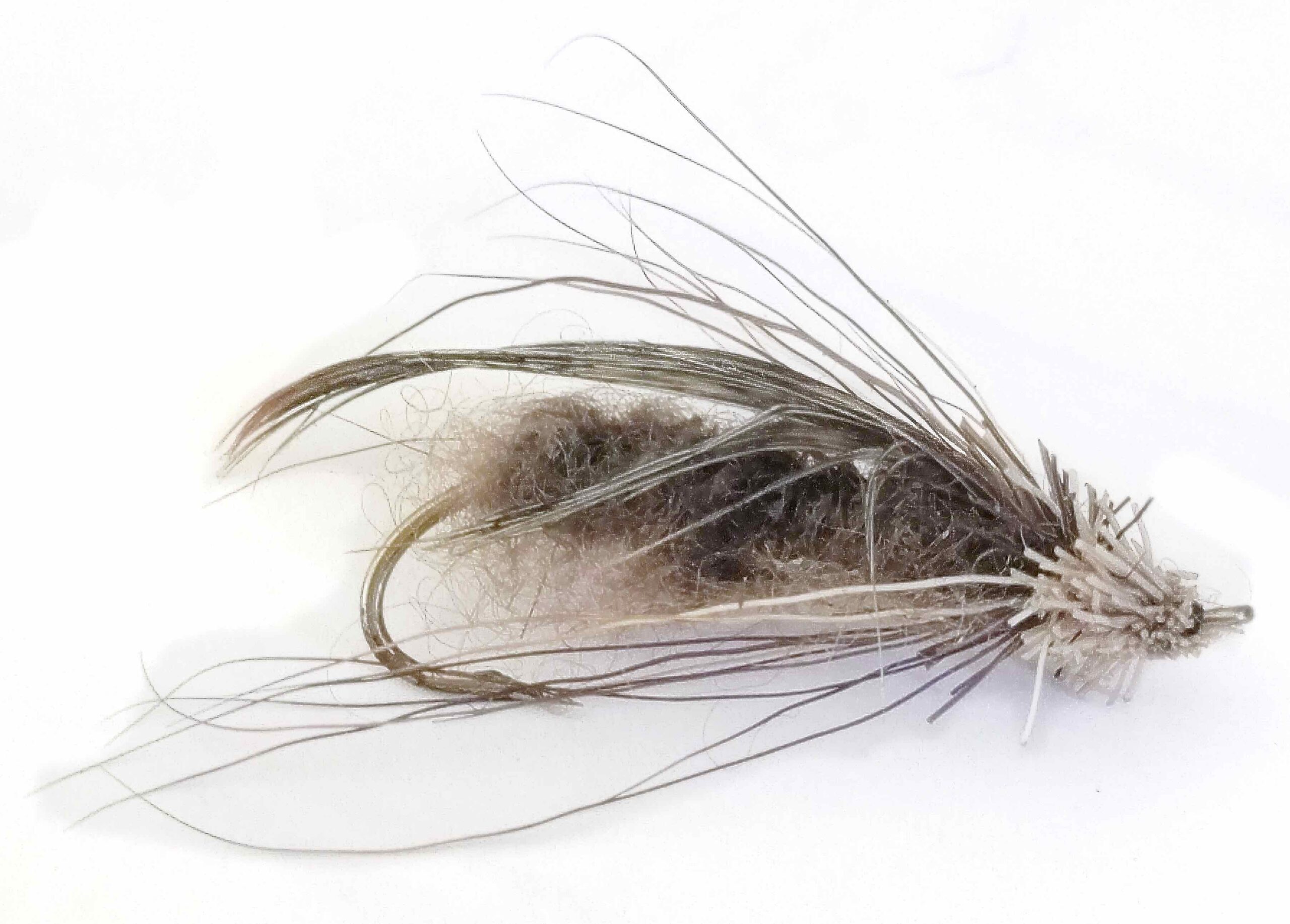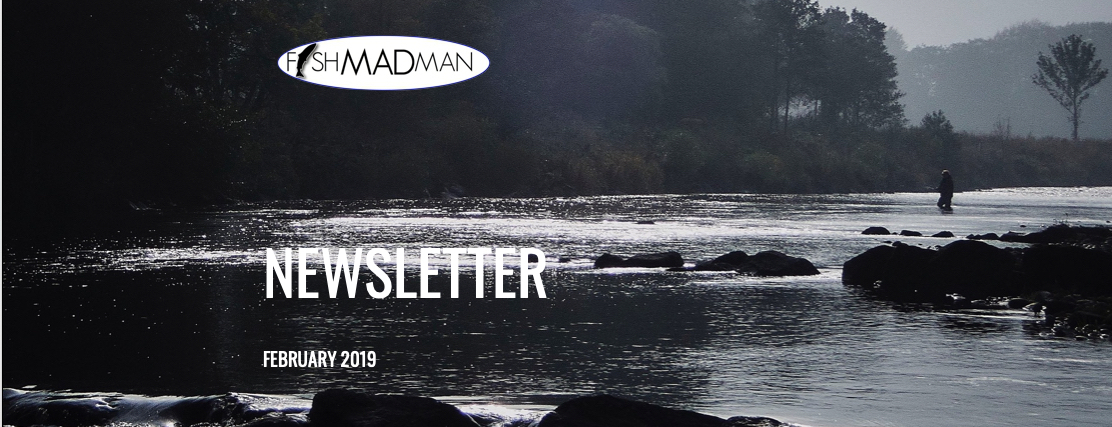
Dear topwater anglers…It has regrettably been some time since we wrote to you last time… I have been afflicted by repetitive strain injury caused by using my computer – a modern-day “workplace injury” one could say.
We have been swamped in 2018, and we hope the many flies we have mailed out to you have given you some great days at the river.
Tight lines from us at Fishmadman
Jesper & Per
Newsletter this time
-
The summer of 2018 was dry.
-
Sinking poly leaders – perfect for surface fishing.
-
Keep your leader and tippet in the refrigerator.
-
Some new flies for 2019
-
The Fishmadman sale.
It was a hot and dry season in the northern hemisphere…
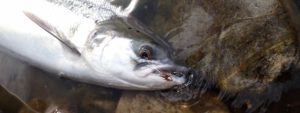
Thin leaders, riffling hitch, dry flies and tiny flies fished close to or on the surface was certainly the way to catch salmon in the summer of 2018 – Maybe the upcoming season will be a different one with more water and lower temperature – but don’t leave your top-water gear at home.
The changes in climate temperature also had its effect on the fishing season of 2018, and it was one of the driest salmon seasons I can recall. Rivers across the northern hemisphere suffered from very low water and higher than average water temperatures – How odd it may sound; these was ideal conditions for riffling hitch and dry fly fishing, and many anglers had weeks of consecutive good topwater fishing.
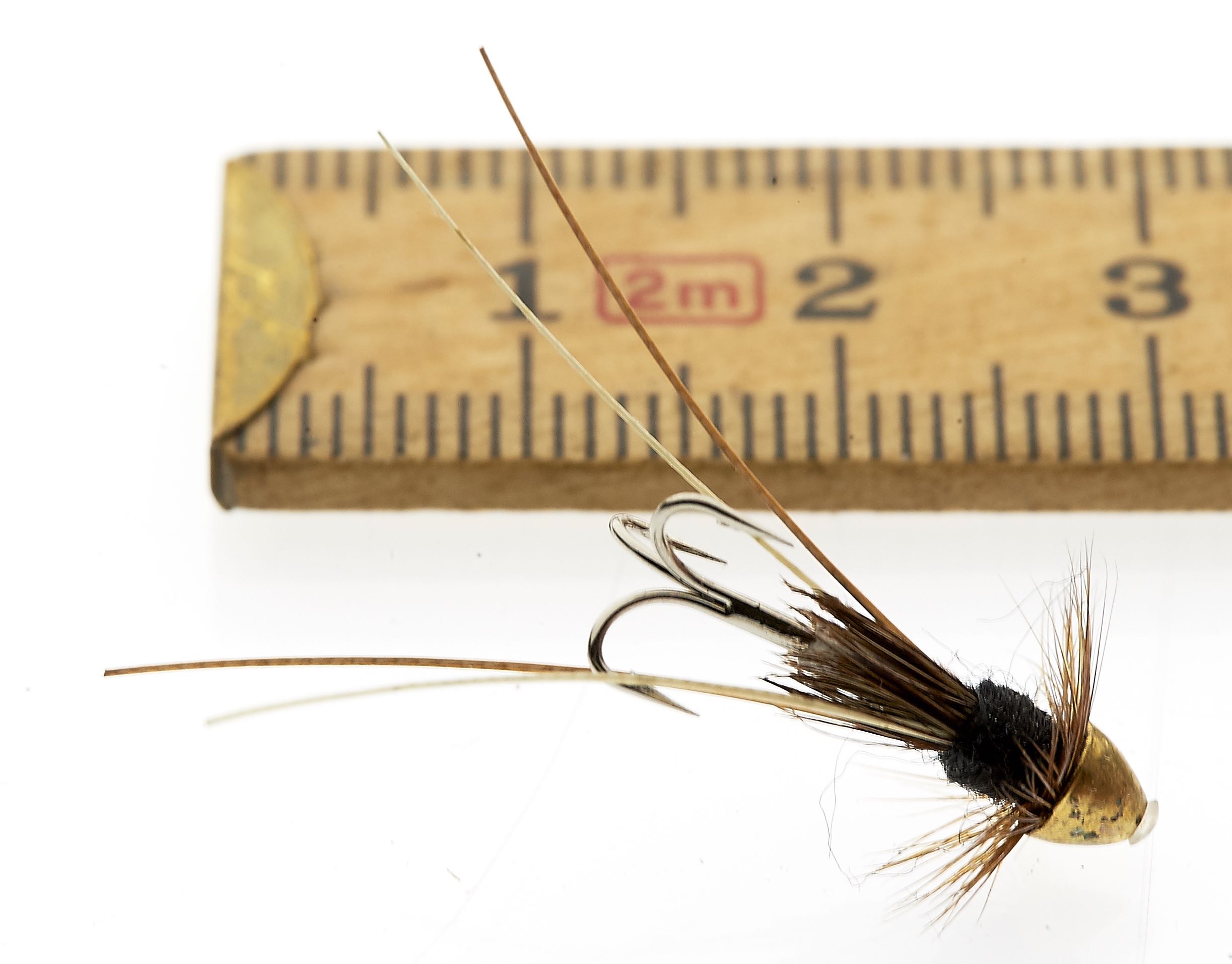
One tiny Frances fly that did well in the summer of 2018 – Fished in the fast, shallow runs it would catch salmon when all else failed …here paired with a dwarf-like # 18 Partridge Salmon Stinger hook.
Sinking polyleaders are the best leader for wake, dry fly and riffling hitch fishing…
The leader is an extension of your fly line
The link between our fly line and fly is of great importance to our casting and presentation skills and choice of leader and tippet material is often debated among anglers.
For more than one reason sinking polyleaders fit perfectly into the world of surface fishing and I will try to highlight some of the reasons why.

POWER IN CASTING
The density of the polymer leaders will aid you in turning over a big wake and dry flies in windy conditions. The greater density of the polymer leader will also help you to cast straight and precisely when using a long line.

AVOID SHADOWS AND DISTURBANCE WITH SINKING LEADERS…
Our favoured polymer leaders are all slow sinking – We prefer these leaders to those leaders that float because the submerged leader casts less of a shadow that may frighten the fish – The submerged leader also causes less disturbance on the surface (drag) and won’t sink too far down to make the fly drown.

POLYMER LEADERS WILL ATTRACT MORE FISH…
This is obviously an expression of views/facts that we have little solid verification of – in fact, it is not the polymer leader in itself that would attract the fish – but the delicate and quite dynamic polymer leader will be able to transform some of the many fine swirls and curls of the river surface to micro-movements * in your leader and finally your fly – something quite useful when you target fish with micro flies such as riffling hitch and other such miniature flies
* Turn a heavy line…into something much better
In line with our thoughts and experience with small flies and the movements they should/could have at the end of the tippet material – we do recommend that you use polyleaders if you intend to use such patterns on big rods with ditto heavy lines. Heavy lines like; short Scandi shooting heads – Skagit lines and even some full Spey lines in # 9 – 11 may be great for distance casting but some of these line designs could also become all too stiff and rigid and tend to lack the ability to follow the many fine hurls and swirls of the river surface – water movement that we believe to be important in our fishing with smallish surface flies.
We’re mad about details…
To preserve our stock of poly leaders we keep them in the refrigerator – making sure you get a product – as fresh as possible… ** Read more about this further down in this newsletter.
How we combine leader and tippet material
We don’t necessarily use a particularly long piece of tippet material at the end of our polyleader. The see-through leader with its dynamic properties is suitably camouflaged in the water column.
We tie the tippet material directly to the core of the polyleader and replace it when it becomes too short or distressed.
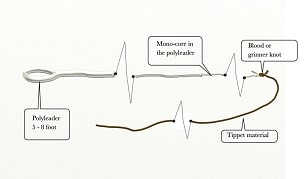
The length of tippet material may vary all depending on what thickness tippet material you’re using and also what kind of fly your fishing with.
Some examples of leaders and tippet combination
- Dry fly fishing with big Bombers or similar big dry/wake flies: 5-foot polyleader + 2.5 – 3 foot (0,8 – 1 meter) of 0.30 mm. (10 lb) tippet material.
- Riffling hitch fishing with small flies; 5 – 8 foot polyleader + 3 – 4 foot (1 – 1.3 meter) of 0.30 (10 lb) – 0.25 (8 lb) tippet.
- Big tube flies like Sunray Shadow, weighted flies etc: 8 foot leader + 2.5 – 3 foot (0,8 – 1 meter) of 0.40 mm. (18 lb) tippet material.
We have the right tippet material…
We decided to take in tippet material to complete the line of leaders and we simply chose our No. 1 choice of tippet material: Maxima Chameleon … Many of you probably already use Maxima and probably for the same reasons as we do.
Our choice of tippet material
Maxima Chameleon tippet material is the given choice for so many salmon and trout anglers around the world and for a good reason – it does what it promises.
- A soft shock absorbing nylon – good for fast strikes when sight fishing.
- Abrasion-resistant.
- Forms great uniform flat knots.
- Great breaking strength.
- Perfect to present big and small flies to picky freshwater fish.
We only supply fresh tippet material – and keep our tippet in the refrigerator **
We personally prefer to buy fresh and well-preserved tippet material – so we promised you that this is what we will be selling you. We buy our Maxima tippet in small freshly made batches and keep them in our company refrigerator – so be sure to get the freshest material from us…nothing else.
We’re probably the only fly shop in the world that keep leaders and tippet in the fridge…
Longer lasting when kept cold
** Why we keep our nylon and polymer leaders/tippet in the refrigerator?
99% of chemical reactions go slower if they are cold, and as a guide, for artificial age testing of polymers, the rule of thumb is 10 degrees Celsius = doubling of the time. This is a readily used formula in polymer (nylon) product lifespan validation.
A new smaller size Monster Tube Caddis (wake fly version)
Steelhead anglers from the Bulkley and the Deschutes River in North America asked us for a smaller version of the Wake Monster Tube Caddis (# 6) so we have added this pattern to our series of caddis wake flies.
Another wake caddisfly imitation for 2019
Later this season we will be adding yet another caddisfly imitation to our range of steelhead wake flies; a tube wake-fly version of the Thompson River Caddis. Here is the original Thompson River Caddis tied by the designer, Mr Harry Lemire (1932-2012), who in 1986 designed this caddis imitation intending to target summer-run steelhead as a low-riding, waking fly. Harry fished it with a floating line while dressing the leader and fly with floatant. It soon became one of his favourites. Photo with courtesy of Mr Jack E Cook.


